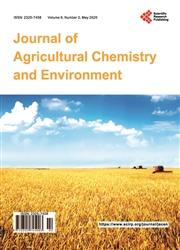Assessment of the Contribution of Flooded Rice Cultivation Systems to Methane Emissions in the Lower Ouémé Valley, in Benin Republic
引用次数: 1
Abstract
Flooded rice cultivation fields appear to be the major source of methane emission. In Benin Republic, flooded rice is cultivated in the Niger River and Oueme River Basins. The present study aims to assess the contribution of flooded rice cultivation systems to methane emissions in the lower Oueme Valley. Methane emission calculation was based on Activity Data which is the flooded rice harvested surface area from 2008 to 2017. The Tier 2 methodology of the IPCC 2006 Guidelines’ and the complements of the “Refinement 2019” have been used to elaborate the specific emission factors for the lower valley of Oueme and to estimate the emission of methane in this zone. Semi-structured interviews were conducted with producers in order to elaborate on their perceptions of gas emissions in the flooded rice fields. The EX-ACT tool was used to estimate the carbon footprint of the intensive rice cultivation system “SRI” and the conventional rice cultivation system “SRC”. It is shown that producers have a strong perception of gas emissions in rice fields but are totally unaware of the nature of the gas. Methane emitted in the lower valley of the Oueme is around 528 tons/year between 2008 and 2017 while the carbon footprint resulting from the results of EX-ACT for the adoption of the SRI rises to the level of sequestration of approximately 0.4 tCH4/ha/year. The intensive rice cultivation system has been identified as the production system that minimizes methane emissions and maximizes rice production.贝宁共和国下ousamoise河谷淹水水稻种植系统对甲烷排放贡献的评估
稻田淹水似乎是甲烷排放的主要来源。在贝宁共和国,尼日尔河和乌梅河流域种植洪水水稻。本研究旨在评估洪水水稻种植系统对Oueme河谷下游甲烷排放的贡献。甲烷排放量的计算基于活动数据,即2008年至2017年淹水水稻收获表面积。使用IPCC 2006年指南的第2层方法和“细化2019”的补充内容,详细阐述了Oueme下游流域的具体排放因子,并估算了该地区的甲烷排放量。与生产者进行了半结构化访谈,以详细说明他们对水稻田气体排放的看法。采用EX-ACT工具对水稻集约栽培系统“SRI”和常规栽培系统“SRC”的碳足迹进行了估算。研究表明,生产者对稻田气体排放有很强的感知,但完全不知道气体的性质。2008年至2017年,Oueme下游流域的甲烷排放量约为528吨/年,而采用SRI的EX-ACT结果产生的碳足迹上升到约0.4 tCH4/公顷/年的封存水平。水稻集约栽培系统被认为是减少甲烷排放和提高水稻产量的生产系统。
本文章由计算机程序翻译,如有差异,请以英文原文为准。
求助全文
约1分钟内获得全文
求助全文

 求助内容:
求助内容: 应助结果提醒方式:
应助结果提醒方式:


